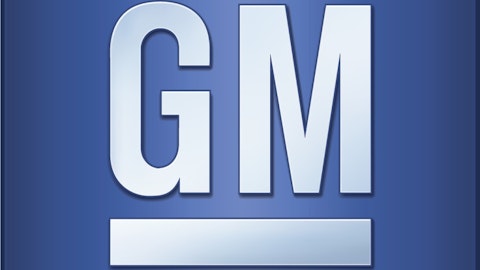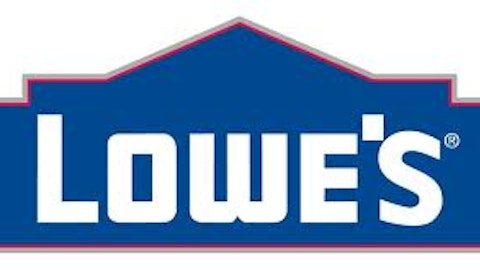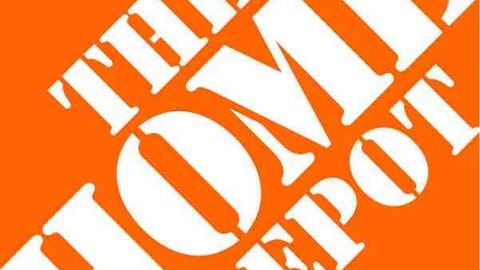Sherwin-Williams Company (NYSE:SHW) is the largest manufacturer of paints in the United States and has over 3,800 stores in North and South America. The company is dependent on several factors, but the greatest may be the housing market, and new constructions in particular. When examining Sherwin-Williams Company (NYSE:SHW)’s revenue over the years, you can see how revenues rose and fell with the housing bubble, and are beginning to rise again. However, at the current high valuation, is Sherwin-Williams Company (NYSE:SHW) a good buy for your portfolio, or should investors consider another way to profit from the rebounding housing market?

About Sherwin-Williams
Sherwin-Williams Company (NYSE:SHW) operates its business through four segments, the largest of which is the Paint Stores segment, which accounts for 57% of the company’s sales. The company’s stores sell a variety of paints, stains, and accessories to professionals and do-it-yourselfers. The company is considered the “greenest” of the major paint manufacturers, and they pride themselves on their environmentally friendly paints and stains.
The Consumer segment (14% of sales) makes a variety of paints under various brand names for sale at both the company’s paint stores as well as through third-party retailers. Sherwin-Williams Company (NYSE:SHW) is the parent company of such brands as Dutch Boy, Krylon, Minwax, Thompson’s Water Seal, and several others. The Global Finishes segment accounts for 21% of its sales and produces and distributes paints and coatings for the automotive and aviation markets. Finally, the Latin America Coatings segment accounts for the other 9% of sales and markets; it distributes and sells the company’s products through 276 stores in a number of Latin American countries.
Growth, acquisitions, and valuation
Sherwin-Williams Company (NYSE:SHW) has grown recently through a series of strategic acquisitions as well as by opening new stores in its existing markets. Most notably, last year the company acquired Comex for $2.34 billion, a leading paint and coatings manufacturer in Mexico. The company is also beginning to venture into the Asian markets with its acquisition of Jiangsu Pulanna Coating Co, which is an automotive finishes manufacturer in China. The company has expressed its interest in continuing to make acquisitions to grow its global footprint.
Also, as mentioned previously, Sherwin-William’s primary driver of U.S. growth is the recovery in the housing market, with analysts projecting a 13% rise in sales this year, due to improvement in residential construction and 70-80 new stores opening. As a result, the company is projected to earn $7.75 per share this year, up 19.4% from last year and representing a P/E ratio of 23.6 times this year’s earnings. Earnings are expected to grow nicely to $9.04 and $10.19 in 2014 and 2015, respectively, on a combination of stronger U.S. demand and aggressive international expansion by the company. This projected three-year average annual earnings growth rate of 16.2% certainly justifies the valuation of the company and then some.
Other ways to play the housing recovery: homebuilders
Another option for playing the housing recovery is the most obvious one: the homebuilders. Of these, D.R. Horton, Inc. (NYSE:DHI) is a good one to look at, especially since shares have pulled back nearly 15% lately. If the housing recovery continues as expected, D.R. Horton, Inc. (NYSE:DHI) could experience tremendous earnings growth over the next few years. The company is projected to report earnings of $1.21 this year, increasing to $1.70 and $2.29 in 2014 and 2015, respectively, for annual growth of 40% and 35%. While this seems incredible for a company with a P/E of 19.6, bear in mind that the growth projected in new home construction is far from a sure thing.
Yet another way: home improvement retailers
Home improvement retailers, such as The Home Depot, Inc. (NYSE:HD), are a great way to play an improving housing market without limiting your exposure to new construction. As the massive amounts of foreclosures and short sales are still working themselves out of the market, distressed properties are a big reason why the market is so hot. While these properties can be scooped up at a discount, virtually all need considerable work done. At least all of the foreclosures did when I was house-hunting last year!
At 24.3 times earnings, The Home Depot, Inc. (NYSE:HD) may look a bit expensive, but the company is projected to grow earnings at a 15% annual rate going forward. The Home Depot, Inc. (NYSE:HD) benefits from all three aspects of a hot housing market: supplies for new construction, renovation of existing “fixer-upper” homes, and homeowners who do improvements to their own homes to boost the value before attempting to sell.
Conclusion
Whichever way you choose to play the housing recovery, as long as things keep improving according to expectations, you should be alright with any of these. Sherwin-Williams is my favorite here because it is not just dependent on the U.S. housing market, but also to some emerging markets that would not necessarily slow down in the unlikely event of another U.S. recession.
The article A Not-So-Obvious Play on Housing originally appeared on Fool.com and is written by Matthew Frankel.
Matthew Frankel has no position in any stocks mentioned. The Motley Fool recommends Home Depot and Sherwin-Williams. Matthew is a member of The Motley Fool Blog Network — entries represent the personal opinion of the blogger and are not formally edited.
Copyright © 1995 – 2013 The Motley Fool, LLC. All rights reserved. The Motley Fool has a disclosure policy.




